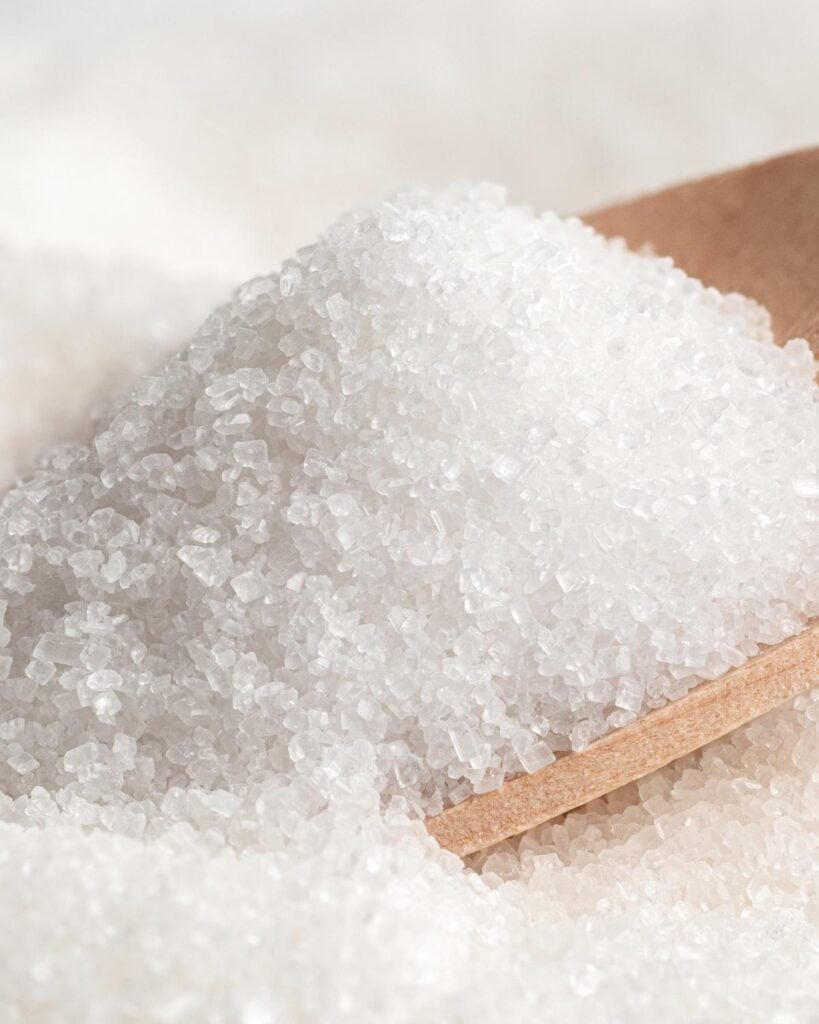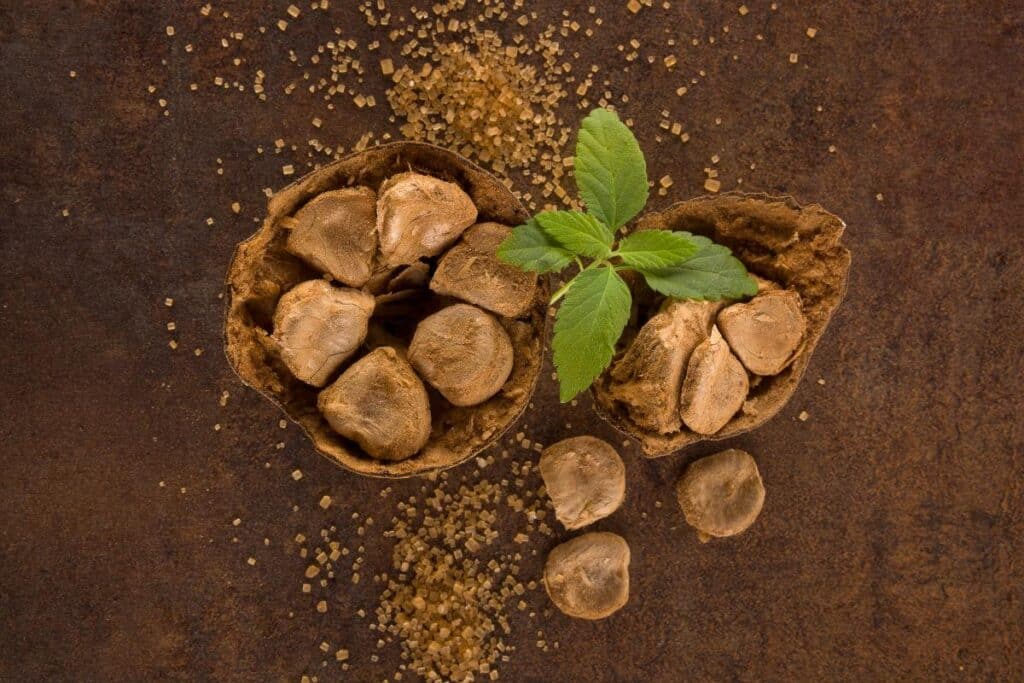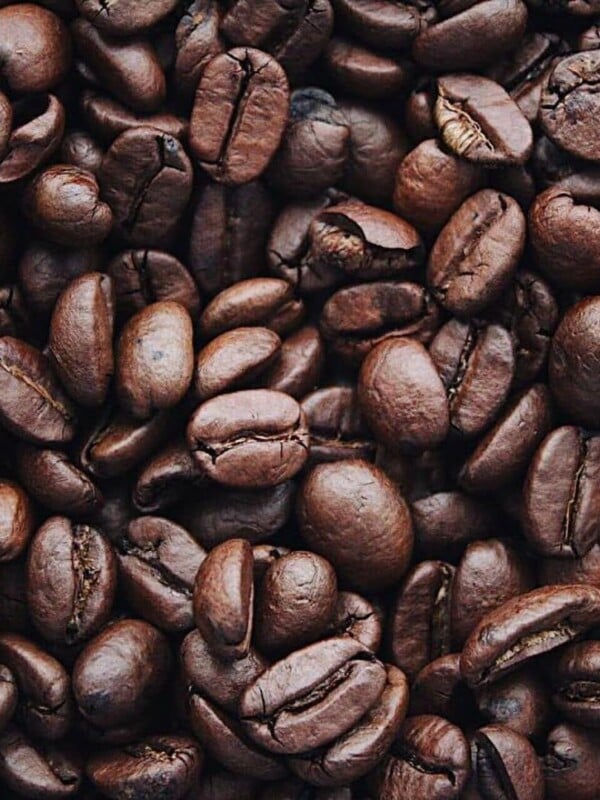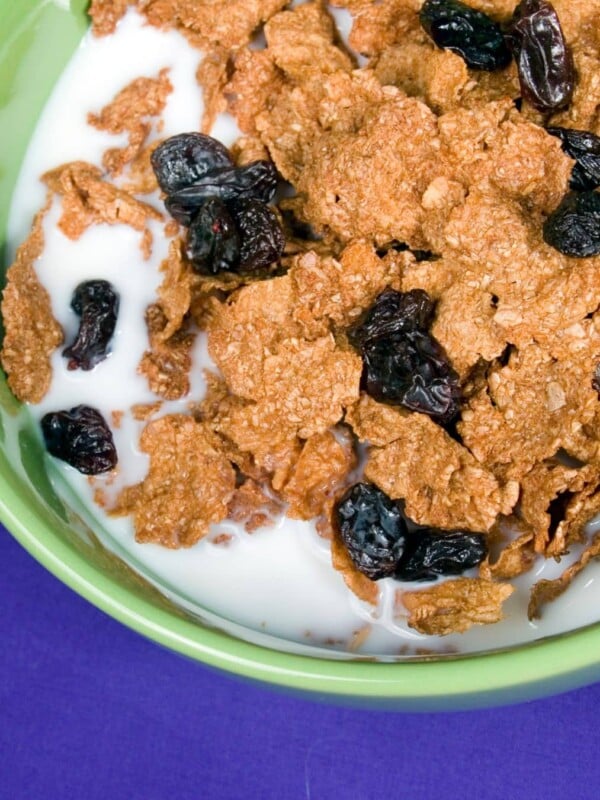This post may contain affiliate links. Please read our disclosure policy.
Allulose vs monk fruit: which one should you choose? It can be tough to find a sugar alternative that’s both tasty and healthy to satisfy your sweet tooth. These two popular sugar substitutes have been gaining popularity, so let’s talk about them.
You may be wondering: what are their differences? Which is the better choice? If you’re new around here – welcome! I’m Jamie, a Registered Dietitian who believes in approaching your diet with balance.
In this blog post, I’ll walk you through what these two sweeteners are, what makes them different, and some of the science behind their potential risks and benefits. That way you can make an informed decision on which sweetener is best for you!
This post may contain affiliate links.

What is Allulose?
Allulose is a relatively new sugar substitute that’s gaining popularity because it tastes and acts just like sugar but contains almost no calories. It’s a monosaccharide (a simple sugar) that naturally occurs in small quantities in figs, raisins, and other fruits.
Allulose can also be manufactured from corn (1).
Allulose is about 70% as sweet as white table sugar with only 10% of the calories (2).
It’s becoming increasingly popular in baked goods because it doesn’t crystallize like other sugar substitutes like the sugar alcohols erythritol or xylitol, but still has the sweet taste you’re looking for.
What is Monk Fruit?
Monk fruit, also known as luo han guo, has been used for centuries in Traditional Chinese Medicine as a sweetener and has been commonly used in diabetes and obesity (3).
Monk fruit (or monk fruit extract) is made by extracting the juice from the fruit, then drying it and grinding it into a powder. It is becoming increasingly popular in the western market because it’s natural and has zero calories.
Monk fruit is similar to stevia extract in that it is a sweetener that comes naturally from a plant; how “processed” it is depends on the specific product that you buy.
Monk fruit is 100-250 times sweeter than sugar. This means that a granulated product with monk fruit is going to require other ingredients to bulk up the product in order to substitute it for regular sugar in baking and cooking.
Some people are a bit more sensitive to the intense sweetness of monk fruit extract and report a bitter aftertaste, depending on how much is used in a product.
Are they safe?
Monk fruit has only been available in the US market since 2010. According to the Food and Drug Administration (the FDA), monk fruit is considered to be safe (4).
Similarly, allulose is also recognized as safe by the FDA (5).
It’s possible to have side effects from anything new in your diet, including using alternative sweeteners.
Some people have reported some digestive issues with a larger amount of allulose, but many people have eaten this sweetener with zero side effects (6).
Monk fruit does not have any reported side effects (7).
While both monk fruit and allulose appear to be safe in the very small amounts that we’re typically consuming them, both are relatively new sugar alternatives, so both are lacking long-term research.

How Do They Compare To Other Sweeteners?
Both allulose and monk fruit are a great alternative when it comes to sweetening foods and drinks due to their low-calorie count and natural origin.
Other sugar-substitute sweeteners, such as aspartame or saccharin, have been around for years, but are artificial sweeteners and much more processed.
And unlike other natural sugary sweeteners that are often perceived as “healthier”, like maple syrup or coconut sugar, both monk fruit extract and allulose won’t affect your blood sugar or contribute calories to your day.
Which one is better for health?
In terms of weight loss, both sweeteners have a low-calorie count and can replace sugar in almost any recipe. Therefore, if you’re working on weight loss goals, either one is a good option to support your goals (8).
Neither monk fruit or allulose will raise blood sugar levels, making it a good sugar alternative for anyone struggling with blood sugar issues like insulin resistance or diabetes. Unlike sugar, they also won’t contribute to any tooth decay.
Now the question is: do you need to use one of these sweeteners?
The American Heart Association recommends no more than 25g of added sugar for women and no more than 36g of added sugar for women per day. Most of the general public does consume more sugar than that, so finding sugar alternatives isn’t a bad idea.
But, if choosing a new sweetener that you don’t really enjoy causes you to end up overeating or binging on the real stuff later, it’s really not having a positive effect on your sugar intake.
Here’s what I mean: if you were to have a chocolate chip cookie with real sugar, would you limit yourself to just a few, vs. if you had a batch of cookies made with a sugar substitute, would you eat more because they’re “healthier?” If changing your sweetener changes your behavior, it might not be a great choice.

Do they taste good?
In terms of taste, the main difference is that allulose is less sweet than monk fruit extract. The sweetness level of monk fruit can be a bit much, especially if too much is used. But, I’ve found products I enjoy that use both sweeteners.
It will likely come down to your personal preference. This may surprise you, but as a dietitian, it actually matters to me that you enjoy your meals and snacks. Health isn’t all about deprivation, no matter what the fad diets might have us believe.
If you make a drink or dessert with a sugar-substitute and you don’t enjoy it anymore, it might not actually be the healthier choice for you. You deserve to enjoy your meals; satisfaction is part of healthy eating.
This also helps to illustrate that nutrition is incredibly personal. There are no cookie-cutter plans that will work for everyone; we all have different priorities and preferences!
My personal preference is to use a combination of sugar alternatives and real sugar. If it’s a recipe or product that calls for an alternative and I like it, awesome. But if I love something that has a bit of real added sugar, I just use some mindful eating strategies.
At the end of the day, there are a lot of “right” ways to eat well; the best sweetener is the one that supports your goals and satisfaction.
Where to find them
You can likely find both allulose and monk fruit at your local grocery store today, but there are lots of options on Amazon too.
That’s a wrap
Allulose and monk fruit are the two of the most popular natural alternative sweeteners on the market right now. They are both low in calories, non-glycemic, and are safe sweeteners.
In either case, they’re an option to help lower calories and sugar, and they won’t have an effect on your blood glucose levels. As long as you don’t compensate by having more of the sweet option because you’re using an alternative sweetener.
And, if you don’t like the taste of these sweeteners, skip ‘em and work on mindfulness instead (that’s a good idea either way). Forcing yourself to use something you hate will just leave you frustrated.
No matter what you use, traditional sugar or an alternative, they should be enjoyed in moderation.
If you’d like more structure in your meal planning so that you can feel confident that you’re nourishing your body well, without following a fad diet, check out my Balanced Basics Handbook. This comprehensive guide shows you how to eat well, without counting macros or calories!
More trending nutrition topics:
Fairlife vs Premier Protein: Which Shakes are Best?
AG1 Athletic Greens Review from a Dietitian














Thanks for sharing your views on substitute sugars. As a diabetic I have tried both allulose and monk fruit. But I prefer monk fruit, but it can be too sweet, just need to adjust the right amount for you’re liking. You are right about being satisfied in the choices of preferring what substitute sugars you enjoy better. When I used allulose in making baked desserts, it was okay, but wasn’t satisfied with the overall taste of it.
Thank you so much for this info. I realized I was doing just that. Not being satisfied. If I just use a little sugar in my coffee daily then my behavior may have a different outcome at supper at night. WATCHING closer what I’m doing instead of thinking it’s okay since I deprived myself with my coffee I earned more food later. This is great! Thank. You much!!
I’ve found that using monk fruit has been good for us, especially now that my husband has type 2 diabetes. But using the same amount as a recipe would call for of sugar , it is way too sweet. If a recipe calls for 1 cup sugar I use about 2/3 cup and sometimes that seems a little too sweet. if I’m running low on monk fruit then I will use some sugar mixed with monk fruit, to help “stretch ” my monk fruit. So if a recipe calls for 1cup sugar I probably would do a half cup of each.
l prefer allulose mainly because it’s less sweet than sugar and of all the sweeteners l’ve tried allulose is the only one that doesn’t leave a aftertaste,especially in my coffee. Being diabetic it also helps.
I follow the keto diet; funnily enough I found monk fruit, which is the one sugar substitute I will use, not as sweet as the raw cane sugar I used to use, so what I do is mix a half-and-half combination to put in my tea and coffee. That way I’m only getting half the sugar, and that mixture is now literally the only sugar I consume.
Thank you for the enlightening article. I have been a type 2 diabetic for approximately 15 years. At the beginning of 2024, my physician, endocrinologist, and myself came up with a game plan to get my glucose to a place we are all satisfied with. Sometimes when my sweet “teeth” rear their ugly head, I want to get my sugar fix. I have come across some desserts that call for sugar substitutes but wasn’t sure which one I would prefer. I think I will try the allulose and see what happens. Hopefully, I will like the taste.
Sugar gives me bloating and trapped gas. Will ally lose and/or monk fruit cause this also?
JB
Recently I have baked with almond flour and the icing out of monk fruit. I am having a hard time finding recipes with non grain flours and these two sweeteners, so I played it by ear.i baked an carrot cake with almond flour, and for icing I used monk fruit, cream cheese and butter. That turned out satisfactory. The next batch I made the cake and icing with allulose. It seems to me like once the allulose is wet it seems creamy and to never stiffen up. The icing even remains soft when I froze it overnight. The Monk fruit icing when frozen on the little cakes could be wrapped up in plastic wrap with out making a mess. I believe allulose by my own experience would be better for sweetening drinks and maybe dishes like puddings. I’m brand new at this so I could be wrong. Someone else might have better luck.